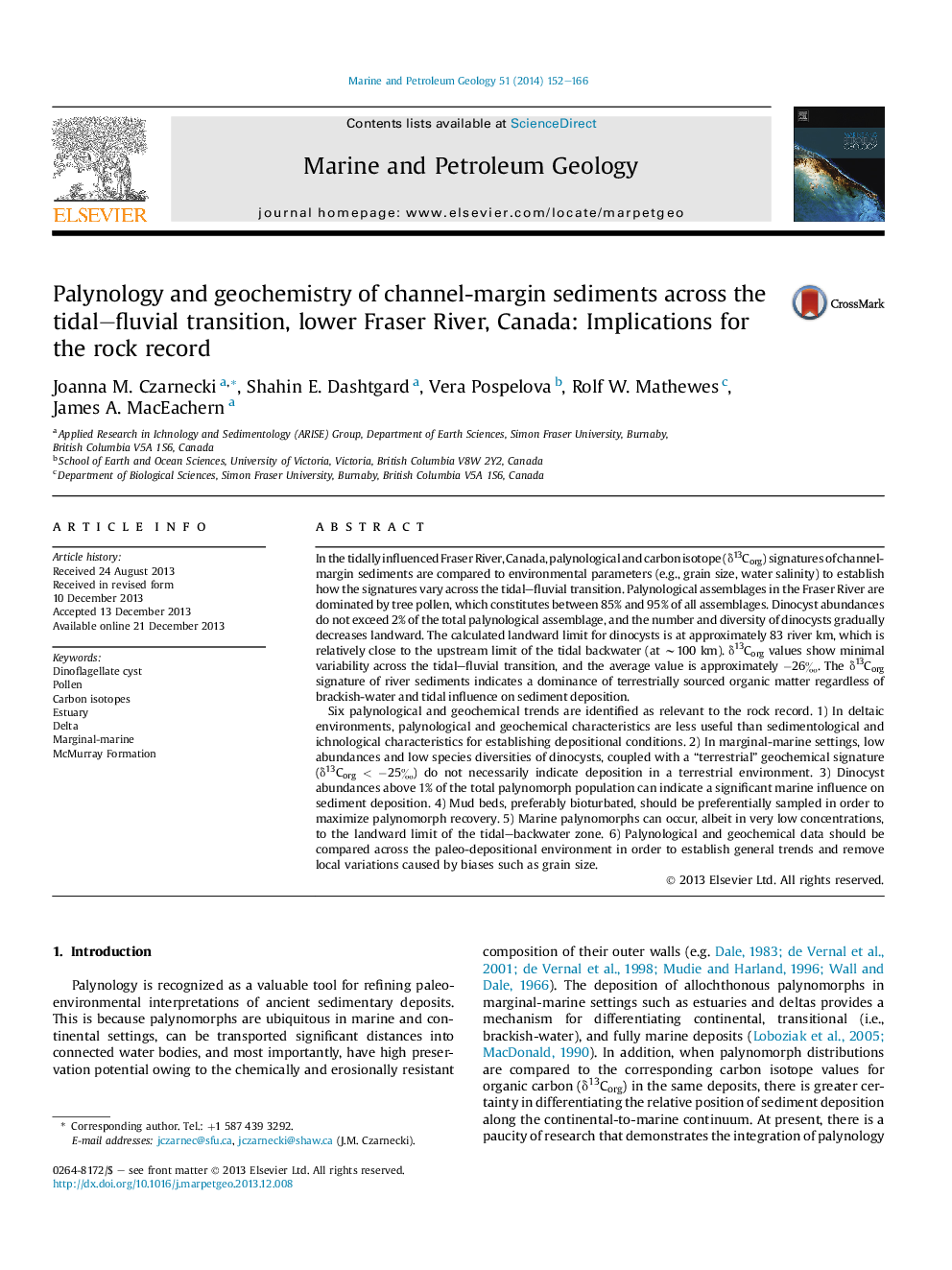| Article ID | Journal | Published Year | Pages | File Type |
|---|---|---|---|---|
| 6435307 | Marine and Petroleum Geology | 2014 | 15 Pages |
â¢Palynological and geochemical data for a tidally influenced river and delta.â¢Dinocyst abundances >1% indicate a significant marine influence.â¢Dinocyst abundances are <7%, even in the delta front and prodelta.â¢No geochemical evidence of saltwater incursion in the channel.
In the tidally influenced Fraser River, Canada, palynological and carbon isotope (δ13Corg) signatures of channel-margin sediments are compared to environmental parameters (e.g., grain size, water salinity) to establish how the signatures vary across the tidal-fluvial transition. Palynological assemblages in the Fraser River are dominated by tree pollen, which constitutes between 85% and 95% of all assemblages. Dinocyst abundances do not exceed 2% of the total palynological assemblage, and the number and diversity of dinocysts gradually decreases landward. The calculated landward limit for dinocysts is at approximately 83 river km, which is relatively close to the upstream limit of the tidal backwater (at â¼100 km). δ13Corg values show minimal variability across the tidal-fluvial transition, and the average value is approximately â26â°. The δ13Corg signature of river sediments indicates a dominance of terrestrially sourced organic matter regardless of brackish-water and tidal influence on sediment deposition.Six palynological and geochemical trends are identified as relevant to the rock record. 1) In deltaic environments, palynological and geochemical characteristics are less useful than sedimentological and ichnological characteristics for establishing depositional conditions. 2) In marginal-marine settings, low abundances and low species diversities of dinocysts, coupled with a “terrestrial” geochemical signature (δ13Corg < â25â°) do not necessarily indicate deposition in a terrestrial environment. 3) Dinocyst abundances above 1% of the total palynomorph population can indicate a significant marine influence on sediment deposition. 4) Mud beds, preferably bioturbated, should be preferentially sampled in order to maximize palynomorph recovery. 5) Marine palynomorphs can occur, albeit in very low concentrations, to the landward limit of the tidal-backwater zone. 6) Palynological and geochemical data should be compared across the paleo-depositional environment in order to establish general trends and remove local variations caused by biases such as grain size.
